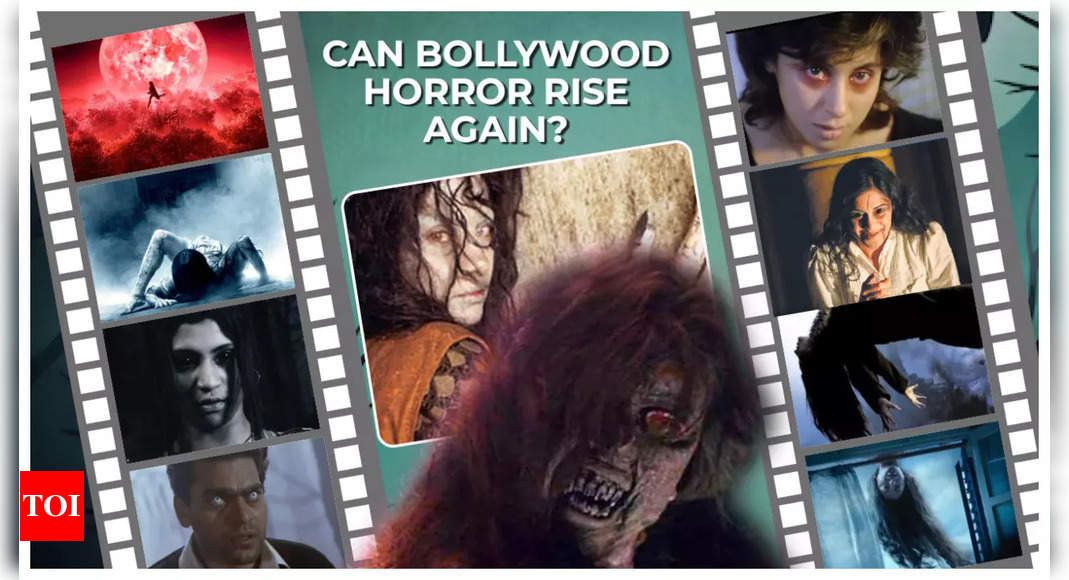
Bollywood’s horror genre was once a vibrant, nerve-wracking space that thrilled audiences with tales of haunted mansions, vengeful spirits, and spine-chilling mysteries.Films like ‘Veerana,’ ‘Raaz,’ and ‘1920‘ became cult classics, leaving an indelible mark on the psyche of moviegoers. However, in recent years, the genre seems to have lost its edge, with a string of lackluster releases that failed to evoke the same fear and fascination.
The golden era of Bollywood horror is now a nostalgic memory, as contemporary films struggle to recreate the same magic. Today’s horror movies often fall flat, either due to predictable plots, over-reliance on jump scares, or a lack of innovation. The genre, once celebrated for its unique blend of terror and emotion, is now in dire need of a revival. This feature explores the decline of Bollywood horror, the missed opportunities, and the potential paths to reignite the flame of fear in Indian cinema.
Filmmakers, critics, and fans alike reflect on what went wrong and how Bollywood can reclaim its lost throne in the horror genre. Whether it’s drawing inspiration from international horror trends or revisiting the elements that made classic Bollywood horror films so effective, the road to revival is filled with possibilities. It’s time to bring back the fear, the chills, and the thrills that once defined Bollywood horror.
The Evolution of Bollywood horror
Bollywood’s horror film genre has seen a fascinating evolution over the years. In the 1990s, Bollywood horror was marked by a distinctive style that combined melodrama, supernatural elements, and traditional folk tales. Iconic films such as Raat, Bhoot, and Mahakaal became synonymous with spine-chilling entertainment. Directors like Ramsay Brothers and Vikram Bhatt were pioneers, creating a legacy of films that mixed eerie atmospheres with dramatic storytelling.
However, the genre began to lose its edge in the 2000s. The initial freshness of supernatural horror was gradually overshadowed by repetitive storylines and a reliance on jump scares rather than genuine scares. Bollywood’s horror films began to focus more on comedy and less on creating a lasting sense of dread, leading to a dilution of the genre’s core appeal.
Exemplary films that set the bar high
Despite the genre’s recent decline, several Bollywood horror films have set high standards and left an indelible mark. These films not only exemplify the best of Bollywood horror but also offer valuable lessons for reviving the genre. Here’s a closer look at some noteworthy examples:
Veerana
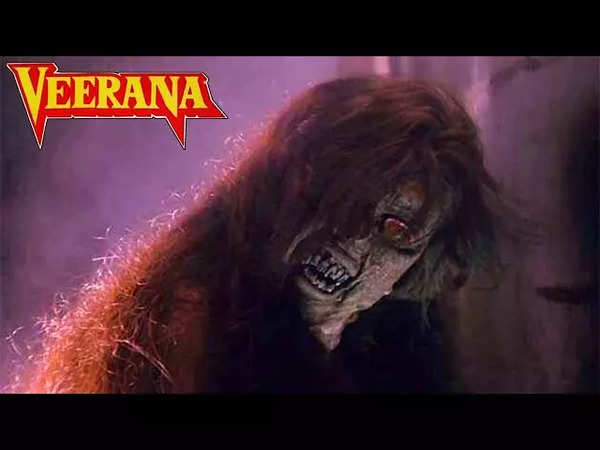
‘Veerana’ is a quintessential example of the Ramsay brothers’ mastery in blending horror with fantasy. Set in a hauntingly beautiful and eerie rural backdrop, the film tells the tale of a witch who possesses a young woman, leading to a series of terrifying events. The film’s use of practical effects, atmospheric music, and iconic characters like the witch and the haunted mansion made it a staple of Indian horror. Despite its low budget, “Veerana” managed to create an immersive experience that has stood the test of time, making it a beloved classic in the horror genre.
Bhoot
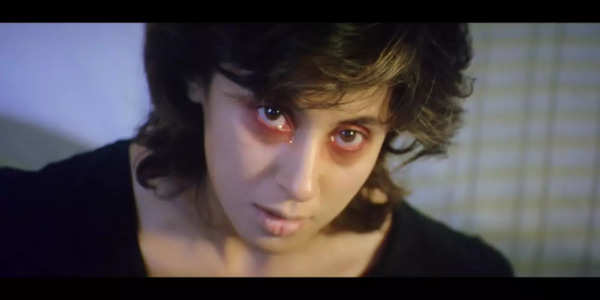
Bhoot is often hailed as one of Bollywood’s finest horror films, and for good reason. Directed by Ram Gopal Varma, it is a masterclass in atmospheric horror and psychological tension. The film follows a couple who move into a new apartment only to discover that it is haunted by a vengeful spirit.
Unlike many horror films that rely heavily on gore or jump scares, Bhoot focuses on psychological horror. The slow reveal of the haunting’s backstory adds depth to the narrative, making the scares more impactful.
Bhoot was praised for its innovative approach to horror and its ability to evoke genuine fear. It remains a benchmark for creating suspenseful and atmospheric horror in Bollywood.
Raat
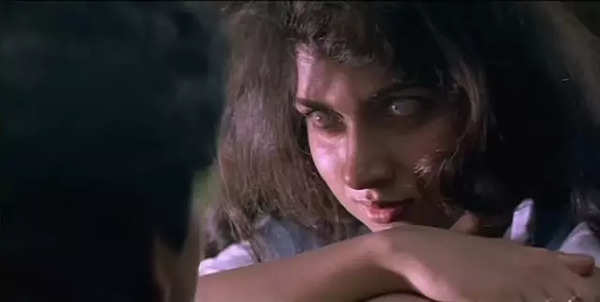
Another gem from Ram Gopal Varma, Raat is considered a classic in the Bollywood horror genre. The film tells the story of a family that moves into a new house only to be plagued by supernatural events.
The film’s sound design plays a crucial role in creating an unsettling atmosphere. The absence of a traditional background score in many scenes heightens the suspense and eeriness.
Raaz
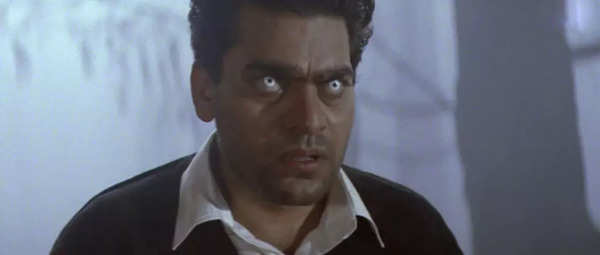
‘Raaz,’ directed by Vikram Bhatt, marked a significant turning point in Bollywood horror, combining elements of romance and horror with modern filmmaking techniques. The film, inspired by the Hollywood movie ‘What Lies Beneath,’ was a massive commercial success, proving that horror could appeal to a broad audience in India. The story of a haunted house and a troubled marriage, with stellar performances by Bipasha Basu and Dino Morea, captivated audiences. The eerie soundtrack, especially the haunting song ‘Aapke Pyaar Mein,’ added to the film’s spooky atmosphere, making ‘Raaz’ a benchmark for modern Bollywood horror.
1920
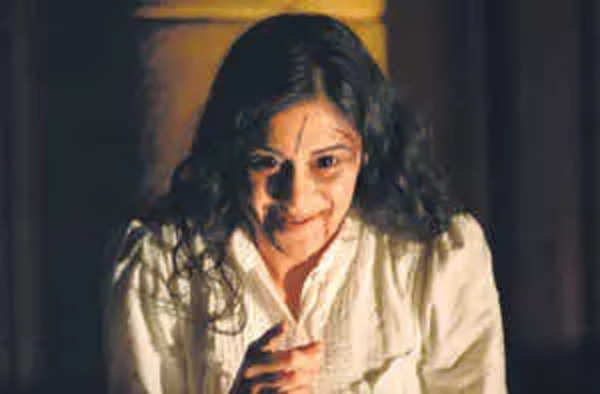
Another gem from Vikram Bhatt, ‘1920’ stands out for its period setting and the sheer intensity of its horror elements. Set in a grand, isolated mansion in the year 1920, the film’s gothic horror vibe is reminiscent of classic horror literature. The story revolves around a newlywed couple who move into the mansion, only to be tormented by a malevolent spirit. The film’s chilling cinematography, compelling narrative, and strong performances, particularly by actress Adah Sharma, helped it become a cult classic. ‘1920’ is celebrated for its dedication to creating a genuinely terrifying atmosphere, making it one of the most respected horror films in Bollywood.
When asked how does acting in a horror movie differ from other genres, Adah Sharma said, “Every genre, every role requires conviction when you play it. But when you sell fear, there is a certain suspension of disbelief that you have to sell. Possession also requires a lot of physical strength. I enjoyed contorting my body, speaking in another voice and doing violent action in my first film.”
The actress also shared what kind of character she would like to explore if she had the creative freedom to shape a horror film. She added, “I did possession in my debut with ‘1920’ and human horror in ‘The Kerala Story’. Maybe horror comedy, I haven’t explored the two together yet or maybe Chucky where I could be Paapi gudia (laughs).”
These are just a few examples of the exemplary horror films that Bollywood has produced. The genre’s rich history includes many more standout films that have terrified and thrilled audiences over the years.
If the reception of horror films and their box office collections are anything to go by, the Bollywood horror genre has seen a significant decline over the past decade, characterized by fewer releases, lower box office returns, and dwindling audience engagement. The genre is struggling due to a lack of innovation, repetitive storylines, and failing to evolve with audience expectations. This trend highlights the urgent need for creative reinvention to revitalize Bollywood horror.
Decline in reception of horror genre in Bollywood
Many Bollywood horror films in recent years have struggled to connect with audiences. Citing the main reason behind it, Indian author and screenwriter K Hari Kumar stated, “One reason for this disconnect is their detachment from cultural roots. Many films rely on Western tropes and simply repurpose them, resulting in hollow experiences. For example, ‘Brides of Dracula’ are reimagined as daayins, yakshinis and chudails in Hindi, Christian exorcism chants are replaced with Hindu chants like the Hanuman Chalisa, and the classic woman in white becomes a pyaasi bhatakti aatma in a flowing white saree. These superficial adaptations often neglect the true essence of Indian supernatural entities, which are deeply embedded in our culture.”
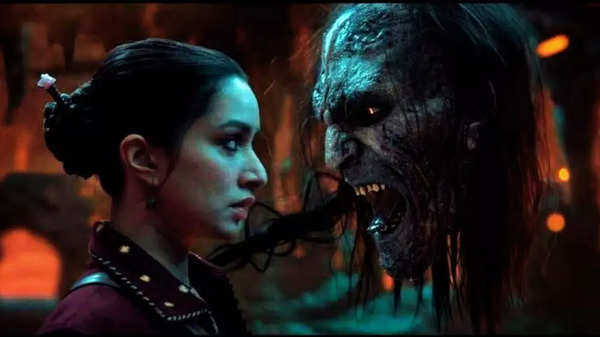
Elaborating further, he added, “Films like Stree, Bulbbul, Tumbbad, Bhool Bhulaiyaa, and Kantara have successfully navigated this by embracing Indian folklore and crafting compelling narratives with well-developed characters. These films have gone down in history as cult horror films. By tapping into primal fears and cultural anxieties unique to our landscape, these filmmakers have created horror that resonates deeply with audiences. Of course, there are horror films that do not tap into folklore, but they are hardly made these days.”
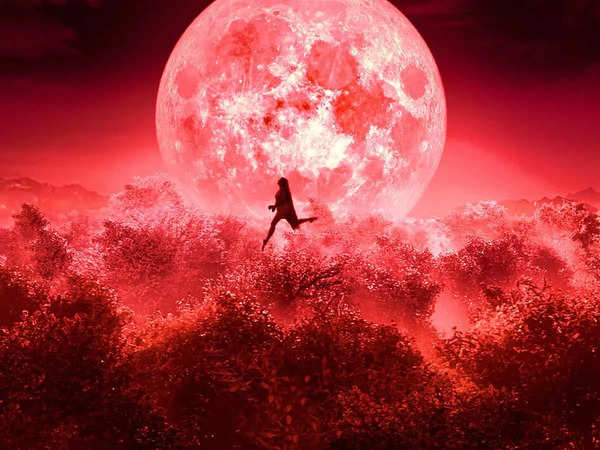
“Another contributing factor to the disconnect is the tendency to fall prey to formulas. When one horror film becomes a hit, there’s often a rush to replicate its success, which can stifle creativity. Each film and story should be allowed to develop organically. When narratives are forced into a mould, they can end up feeling derivative, and audiences might perceive them as mere imitations of previous successes,” he concluded.
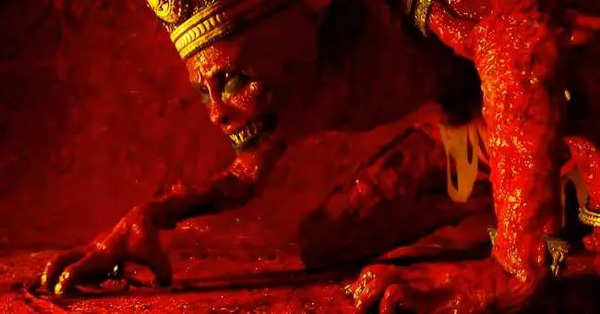
As someone who has worked in a horror film, Adah Sharma too shared reasons for the decline of the Bollywood horror genre. She said, “Horror is a genre that is really enjoyed by the audience but it’s looked down upon by the elite of the industry. Horror is associated with being tacky even though it has a huge fan following so maybe that’s why people don’t really make many horror films. On social media recreation videos of scenes from 1920, character art etc show how much people love watching horror.”
The decline in the reception of Bollywood horror films can be attributed to various other factors too that have gradually eroded the genre’s appeal, especially when compared to its previous golden eras.
Over-reliance on formulaic plots
One of the key reasons for the decline is the over-reliance on predictable and formulaic plots. In the golden era of Bollywood horror, films like ‘Veerana’ and ‘Raaz’ captivated audiences with their fresh narratives and unexpected twists. However, in recent years, many horror films have resorted to recycling the same old tropes—haunted houses, vengeful spirits, and clichéd jump scares—without adding anything new or innovative. This has led to audience fatigue, as viewers are no longer surprised or intrigued by the repetitive storylines.
Lack of innovation and creativity
This inconsistency in maintaining suspense and delivering a satisfying conclusion is a recurring issue in modern Bollywood horror films, contrasting sharply with the more consistent narratives of earlier successes like Raaz.
Shift in audience preferences
As audiences became more exposed to international horror films that explored psychological horror and complex narratives, the straightforward supernatural themes of films like Ghost felt outdated and uninspiring. The film’s failure to connect with modern viewers reflects the broader trend of shifting audience preferences, where there’s a growing demand for more sophisticated horror.
Competition from other genres
In recent years, other genres like horror-comedy, action, comedy, and biopics have gained prominence in Bollywood, often overshadowing horror films. Big-budget action films and star-driven comedies have dominated the box office, leaving little room for horror films to make a significant impact. Additionally, the rise of streaming platforms has provided audiences with a plethora of content options, further diverting attention away from traditional horror films.
Recent Bollywood horror movies that struggled to leave an impact:
Dobaaraa
Directed by Anurag Kashyap and starring Taapsee Pannu, this supernatural thriller attempted to explore time loops and parallel universes. Despite an intriguing concept, the film failed to connect with the audience, resulting in underwhelming box office performance.
Dybbuk
This Amazon Prime release, starring Emraan Hashmi, is a remake of the Malayalam film ‘Ezra.’ Despite a decent narrative, the movie didn’t succeed in captivating viewers, receiving mixed reviews.
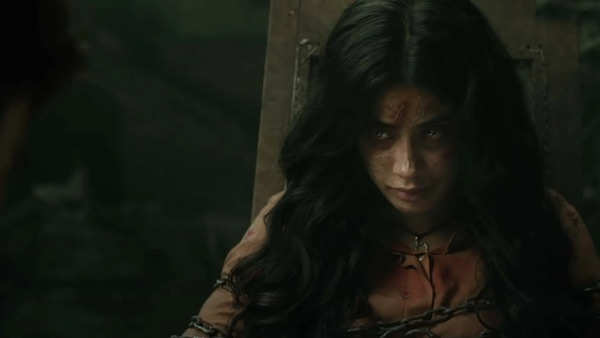
Roohi
Starring Janhvi Kapoor, Rajkummar Rao, and Varun Sharma, ‘Roohi’ tried to blend horror with comedy. However, the film didn’t live up to the expectations set by its predecessor ‘Stree,’ leading to disappointment among fans and critics alike.
Bhoot: Part One – The Haunted Ship
Vicky Kaushal’s horror outing was based on a true incident of a ship washed ashore in Mumbai. Despite an eerie setting, the movie struggled to scare the audience and performed poorly at the box office.
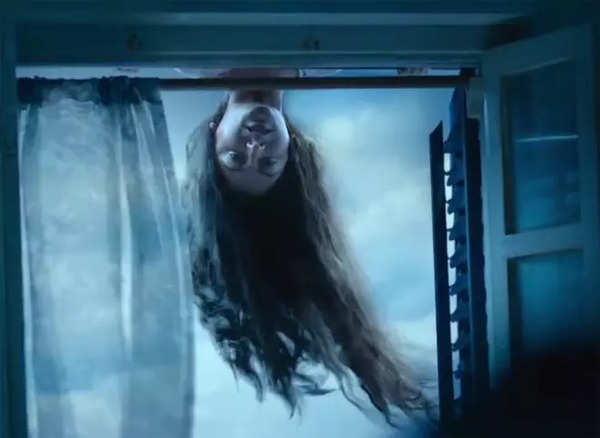
Pari
Produced and starred by Anushka Sharma, ‘Pari’ presented a unique take on horror with its dark and unsettling tone. However, it didn’t perform well commercially despite its innovative approach.
Ghost
Directed by Vikram Bhatt, Ghost struggled to attract audiences, largely due to its reliance on conventional horror elements that no longer resonated with viewers.
Scope of horror genre in Bollywood
Bollywood’s horror genre, once known for its chilling tales and cultural depth, has seen a significant decline over the years. Once a staple that captivated audiences with its unique blend of fear and folklore, today’s horror offerings struggle to make an impact. There’s an urgent need to revive this genre, tapping into new creative approaches and leveraging modern technology. With the right blend of innovation and respect for the genre’s roots, Bollywood can reclaim its place in the hearts of horror fans.
Kantara – Official Trailer
“While sound design, background score, atmosphere, and visual elements are crucial in the horror genre, it is the screenplay that anchors the narrative, creating a foundation on which these elements build. Unfortunately, many current horror screenplays rely heavily on jump scares and clichéd characters, which can undermine the genre’s potential,” Hari Kumar shared.
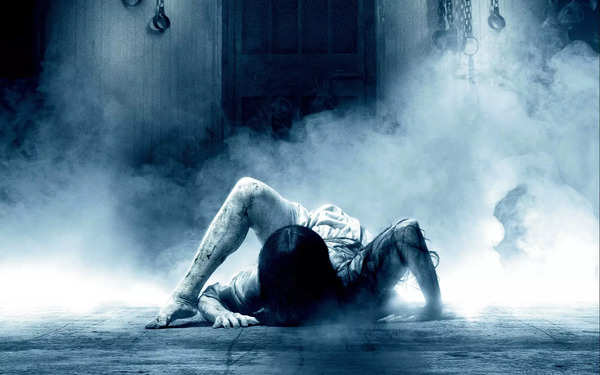
He also further added, “Effective horror writing goes beyond just generating scares; it taps into psychological fears and builds tension that resonates with the audience. A compelling horror screenplay creates a believable world where the supernatural seamlessly blends with reality, and characters are well-developed and relatable. Achieving this requires a deep understanding of horror’s nuances from both filmmakers and writers.”
“By fostering better writing and encouraging creative collaboration, Bollywood can revive its horror offerings, creating films that not only frighten but also captivate and engage viewers on a deeper level,” he said.
There is great potential to explore psychological horror, where the focus is on the characters’ mental and emotional states rather than external supernatural elements. Films that delve into the psyche of characters and explore themes of paranoia, guilt, and fear of the unknown can appeal to audiences looking for more sophisticated, thought-provoking content.
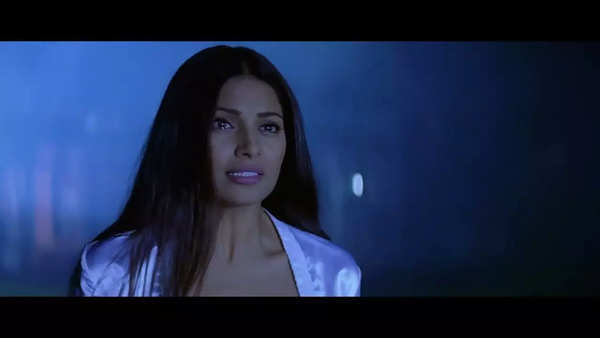
The screenwriter too echoed the same, “Emerging trends in global horror cinema, such as psychological depth, innovative storytelling, and genre blending, offer valuable inspiration for Bollywood to rejuvenate its horror offerings. Embracing these trends and focusing on well-crafted narratives that respect and explore the true essence of our folklore can lead to truly groundbreaking horror films.”
Horror-comedy
The horror-comedy sub-genre has seen success with films like Stree proving that there is a market for films that blend scares with humor. This sub-genre can be further explored to create films that entertain while still delivering genuine scares.
Stree 2 – Official Trailer
Folklore-based horror
Leveraging India’s diverse folklore and mythology can set Bollywood horror apart from its Western counterparts. Films that incorporate regional legends, ancient curses, and spiritual practices can offer fresh and culturally rich stories that resonate with both Indian and global audiences.
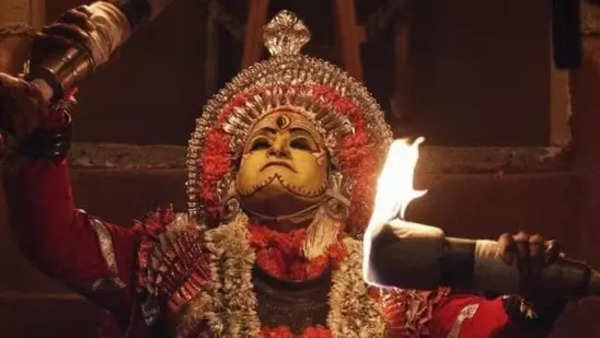
Hari Kumar stated, “Folk and mytho-horror is the way forward. Delving deeper into Indian folklore and mythology—beyond their surface-level portrayals—can uncover fresh and compelling horror narratives. The folk concepts are distinct, with intricate mythological backgrounds that are frequently overlooked, leading to their misrepresentation in mainstream media. By exploring these complex mythological roots, we can create horror that taps into primal fears and cultural anxieties, establishing a chilling atmosphere deeply rooted in Indian lore.”
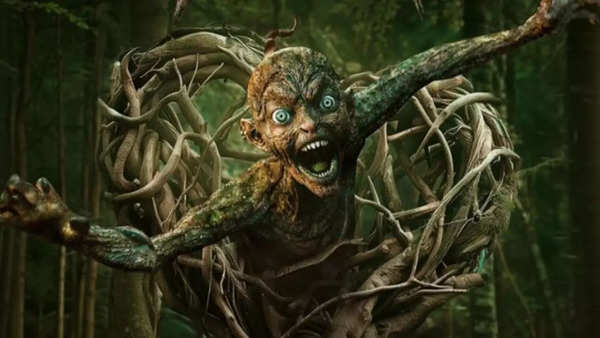
“Some Indian myths and legends like Dakini, Yakshi, Brahmrakshas, Muhnochwa, Jalpishaach, Chatan, etc. are underexplored in Bollywood horror. My next book delves into the concept of the Dakini, aiming to challenge the myths perpetuated by pop culture and offer a more nuanced understanding of this magnificent entity from our lore. It blends horror with psychological thriller elements and folk mythology, presenting a fresh take on an underexplored aspect of Indian horror,” he concluded.
Anthology films
Anthology horror films, which consist of several short horror stories, offer a unique way to explore different types of horror within a single film. Ram Gopal Varma has experimented with this category with his films like, ‘Darna Mana Hai’ and ‘Darna Zaroori Hai’. This format can attract audiences by providing varied experiences in one sitting, and it also allows filmmakers to experiment with different horror styles and themes.
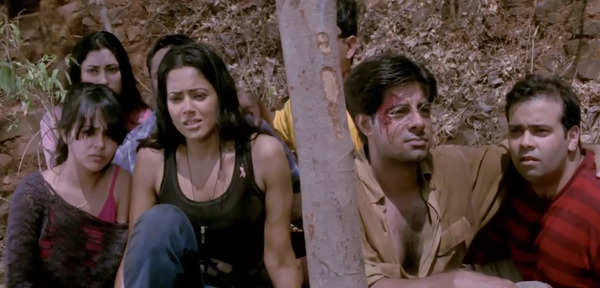
By addressing the reasons for the decline and tapping into the vast potential of the horror genre, Bollywood can bring back the spine-chilling experiences that audiences crave, while also setting new standards for horror in Indian cinema. The revival of this genre could mark the beginning of a new era, one where Bollywood once again becomes known for its ability to thrill and terrify.






